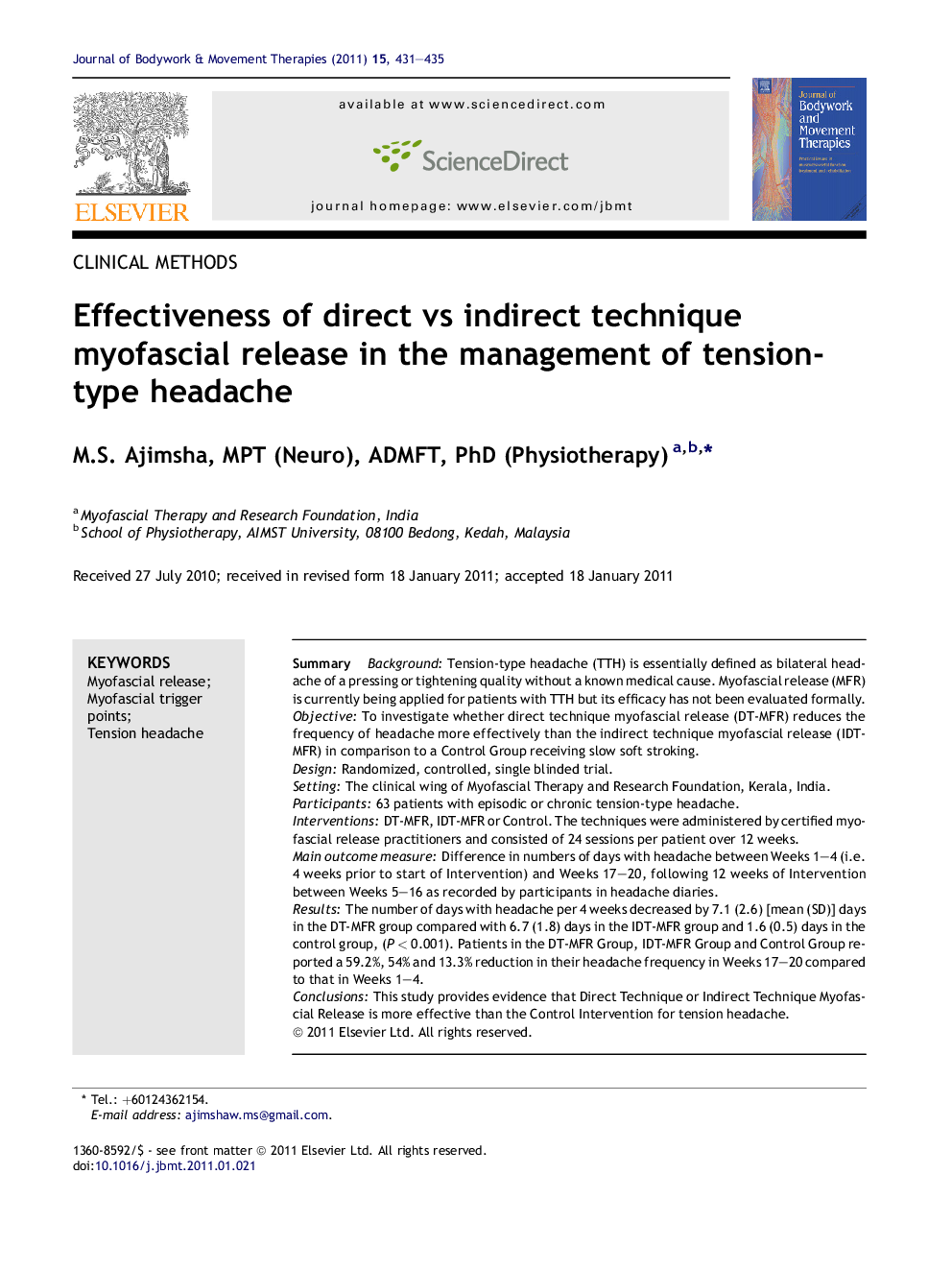| Article ID | Journal | Published Year | Pages | File Type |
|---|---|---|---|---|
| 2619747 | Journal of Bodywork and Movement Therapies | 2011 | 5 Pages |
SummaryBackgroundTension-type headache (TTH) is essentially defined as bilateral headache of a pressing or tightening quality without a known medical cause. Myofascial release (MFR) is currently being applied for patients with TTH but its efficacy has not been evaluated formally.ObjectiveTo investigate whether direct technique myofascial release (DT-MFR) reduces the frequency of headache more effectively than the indirect technique myofascial release (IDT-MFR) in comparison to a Control Group receiving slow soft stroking.DesignRandomized, controlled, single blinded trial.SettingThe clinical wing of Myofascial Therapy and Research Foundation, Kerala, India.Participants63 patients with episodic or chronic tension-type headache.InterventionsDT-MFR, IDT-MFR or Control. The techniques were administered by certified myofascial release practitioners and consisted of 24 sessions per patient over 12 weeks.Main outcome measureDifference in numbers of days with headache between Weeks 1–4 (i.e. 4 weeks prior to start of Intervention) and Weeks 17–20, following 12 weeks of Intervention between Weeks 5–16 as recorded by participants in headache diaries.ResultsThe number of days with headache per 4 weeks decreased by 7.1 (2.6) [mean (SD)] days in the DT-MFR group compared with 6.7 (1.8) days in the IDT-MFR group and 1.6 (0.5) days in the control group, (P < 0.001). Patients in the DT-MFR Group, IDT-MFR Group and Control Group reported a 59.2%, 54% and 13.3% reduction in their headache frequency in Weeks 17–20 compared to that in Weeks 1–4.ConclusionsThis study provides evidence that Direct Technique or Indirect Technique Myofascial Release is more effective than the Control Intervention for tension headache.
